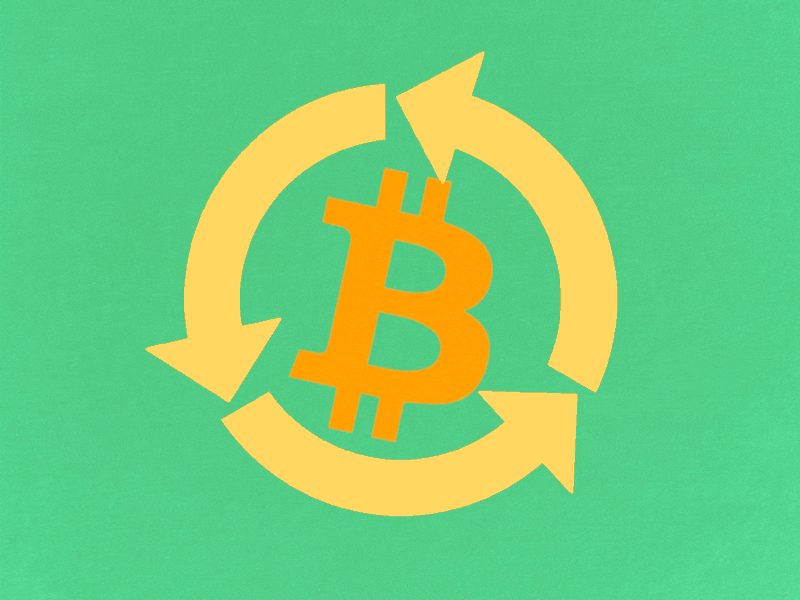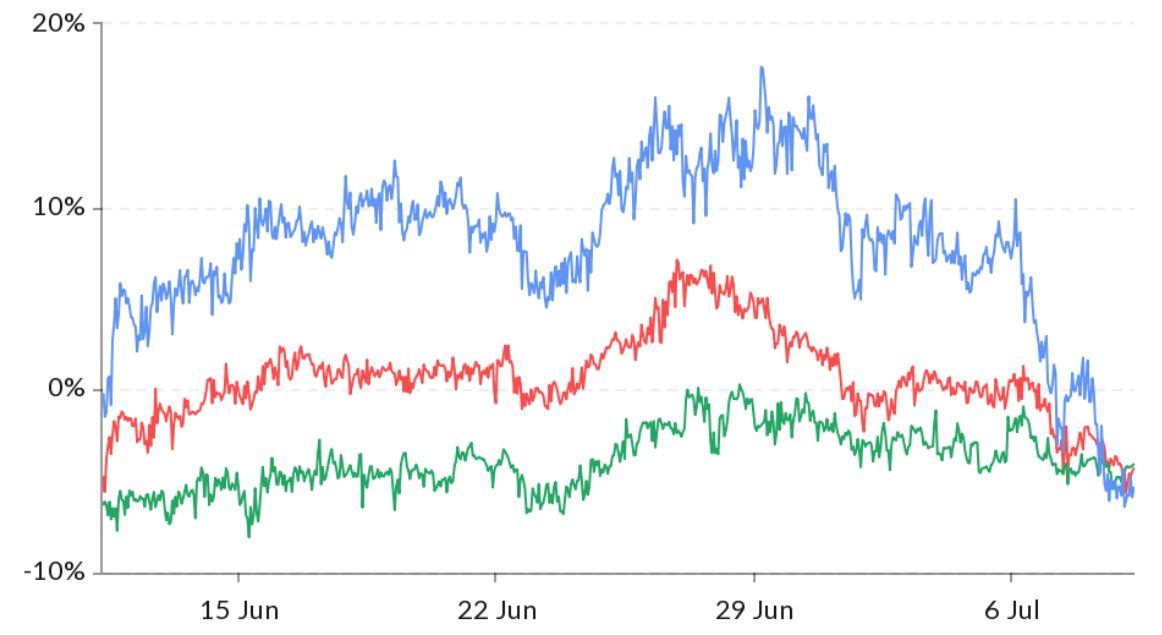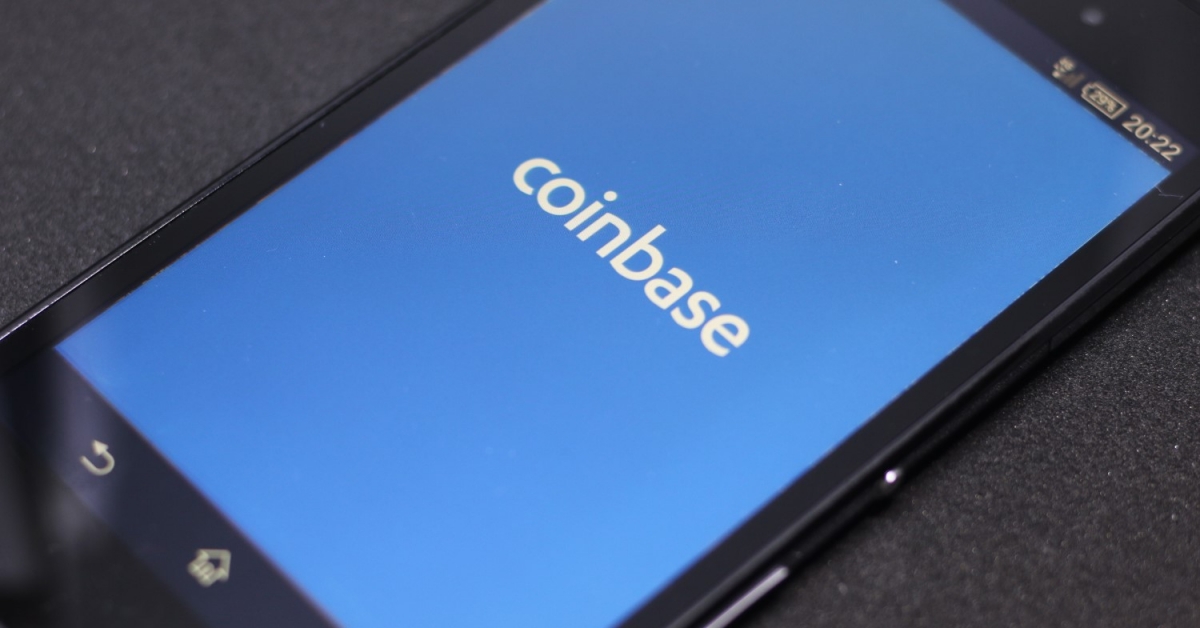Leaked recordings of a private conversation suggest crypto lender Babel Finance leveraged some user funds to long bitcoin and faced potential default risks during this year’s Black Thursday market crash in March.
Seven audio files first emerged online on Sept. 25 that appear to be parts of a longer in-person conversation between Del Wang, co-founder of Beijing-based Babel, and an unknown person.
The recordings offer a rare hint of strategies taken by the industry’s nascent crypto lenders in managing their balance sheets, suggesting some business practices may be different from what they claim.
The audio files were initially uploaded to Anchor.fm by an anonymous Twitter user on Sept. 25 but were soon taken down by the platform after Babel filed complaints. The anonymous Twitter user then posted the recordings to YouTube.
Several people familiar with the company listened to the recordings and confirmed to CoinDesk that it was Wang speaking. In one of the files, the unknown person also addressed Wang by his full name.
In a written response to CoinDesk on Sept. 30, a Babel representative said the company is unable to confirm the authenticity of the recordings because they are “fragmented” and “clearly artificially edited.”
The representative said they can’t comment on the content of the recordings and claimed the accusations made by the anonymous publisher were baseless and not factual. Wang didn’t respond to CoinDesk’s request for comment on the recordings.
Following Babel’s initial response to Decrypt that the recordings could be patched together, the anonymous Twitter account posted two longer recordings on Sept. 30 that contain the previous seven parts. The new recordings suggest the conversations happened around March 20.
Founded in 2018, Beijing-based Babel Finance has essentially taken on the role of a crypto bank in the industry by offering both saving and lending products. One of its money drivers was the difference between lending and saving interest.
But according to the leaked recordings, Babel also bet that bitcoin’s price would rise and leveraged both its own and some customer funds to long bitcoin, which faced potential default risks during bitcoin’s 60% crash six months ago.
‘It’s called X Plan’
In the additional recordings published on Sept. 30, Wang can be heard saying Babel started buying bitcoin in early 2019 when its price was around $3,000. The initial capital for those purchases came from the $750,000 raised from Neo Growth Capital (NGC) and another $4 million as deposits, also from NGC.
When asked why NGC didn’t buy bitcoin with the $4 million, Wang said NGC wasn’t planning to use that money for such a purpose. An unidentified partner at NGC reportedly said he was not aware of the NGC funds being used to speculate on bitcoin’s price.
Wang apparently said in the recording that Babel adopted a strategy where it pledged the bitcoin it purchased to another lender in order to borrow more money when bitcoin’s price went up to $4,000.
With the newly borrowed money, it continued buying more bitcoin. When bitcoin’s price went up again, it repeated the same method, which put more leverage on its long positions. “We became the customer of ourselves,” Wang said in the recordings.
“We kept increasing our [bitcoin long] positions starting from $3,000 all the way to $14,000,” Wang was heard saying in the recordings. “Initially we had about 3X leverage, but then we leveled up as bitcoin’s price surged.”
“It’s called X Plan,” Wang said in the recording, seemingly referring to the leverage strategy. “Initially only Flex Yang [Babel’s CEO and the other co-founder] and I knew about it. But later on three other shareholders also became aware of the plan.”
Babel declined to elaborate on X Plan or comment specifically on the usage of NGC’s funds in the beginning, claiming information with its customers is confidential.
The apparent upside of this method is the multiplied return on the back of bitcoin’s bull run in the first half of 2019, when bitcoin went from $3,000 to $14,000.
Wang said in the recording that when bitcoin reached $14,000, the firm did realize this was not a long-term game and initially set a profit-stop order at $18,000. Even though it had later lowered the stop order targets, it didn’t fully close its positions.
“Had we closed our positions even at $10,500, we could have made net profits of two to three hundred million yuan [around $30 million to $40 million],” Wang was heard saying.
But the downside was the risk of how quickly Babel’s crypto reserves could react to margin calls from its capital sources for more bitcoin if bitcoin’s price suffered a sudden plunge.
User funds
Babel boasts that it is one of the major crypto lenders in the world, claiming to have over $350 million in outstanding loans as of June 30 this year.
But customers’ deposits only constitute a relatively small part of the money that’s available for borrowers. A majority of Babel’s capital comes from other institutional lenders.
Babel’s CEO and co-founder Flex Yang said prior to March 12 his firm was able to enjoy a collateral-to-value (CTV) rate as low as 100% for borrowing funds from its capital sources. The firm’s main capital partners included BlockFi, Genesis Capital and Tether at the time.
That means Babel would only need to pledge $1 million worth of bitcoin in order to borrow $1 million of USDT.
But, when lending this amount to its own customers, Babel required an over 160% CTV rate, meaning borrowers needed to put in over $1.6 million worth of bitcoin as collateral. As such, Babel would have the difference of the $600,000 worth of bitcoin collateral sitting on the liability side of its balance sheet.
One reason Babel could enjoy a more attractive collateral rate from its capital sources is because it advertises that Chinese bitcoin miners who are able to generate bitcoin organically and meet margin calls if needed are its primary lending customers.
In an ideal situation, the risk would be relatively low for Babel if it holds all the $600,000 bitcoin collateral in the example above within its reserve.
But the reality appears to be muddier because Babel didn’t exactly draw a fine line between its own assets and user funds, according to Wang in the recording.
In the response to CoinDesk, Babel claimed that customers’ collateral is either stored in cold wallets or further lent out to counterparties while taking in USDT as collateral.
“The situation of Babel using customers’ funds to trade crypto doesn’t exist,” the firm claimed in the statement.
But then that raises a question of how it could even differentiate customers’ positions from its own long positions if they were bundled together to execute a leverage plan.
In one of the recordings, the unknown person said to Wang: “Strictly speaking, these [user] funds do not belong to you, and you should not have used them as leverage.”
“Right,” Wang answered, explaining: “The money we used to buy bitcoin came from our fundraise, our interest profits and profits we made through increasing our long positions.”
The person went on to question: “If it was all just your own asset, you couldn’t have got this large [long] position. … That means you probably have also used parts of borrowers’ collateral and depositors’ funds.”
Wang did not directly answer with a yes or no to that question but said that “if considering ourselves as a customer, then our funds and real users’ funds are all mixed up together.”
“The good customers are the real customers. The bad customers are ourselves,” Wang was also heard saying in the recording.
Babel declined to disclose how large its long positions were before this year’s March sell-off.
March 12
The real risk didn’t start to materialize until March 12, when bitcoin’s price crashed by over 60% in a matter of a day.
The sudden drop led to a severe devaluation of Babel’s collateral at its capital sources, to the extent that its collateral at Tether at one point was worth below 80% of what Babel had borrowed from the USDT issuer, people familiar with Babel’s operations told CoinDesk.
The people said at that point Babel owed Tether 2,000 to 3,000 BTC just to meet the 100% CTV rate. If Tether chose to liquidate Babel’s position, itself would also suffer a loss since the bitcoin collateral it had was worth much less than the money it lent out at that point.
When asked why Babel didn’t send in more bitcoin to meet the margin calls from its capital sources during the March 12 crash, Wang said in the recording the firm didn’t have the coins for its own positions. He said Babel later liquidated some borrowers’ positions worth 3,000 to 4,000 BTC but didn’t exactly sell them.
Babel declined to comment on Wang’s comment about it falling short of reserves to meet margin calls but claimed it didn’t default any borrower due to its own violation of terms, such as failing to pay back collateral as demanded.
Babel said it also didn’t default any institutional lenders and there was no forced liquidation from its capital partners due to Babel’s own violation of terms.
But one smaller lending partner, Hong Kong-based OSL, force-liquidated Babel’s more than 500 BTC collateral following the March 12 crash, according to screenshots of conversations between the two seen and reviewed by CoinDesk.
Yang said the forced liquidation came after Babel met OSL’s margin calls and subsequently blamed OSL for the act instead of itself. OSL has not yet responded to CoinDesk’s request for comment.
In fact, the people familiar with the situation said when the March 12 crash happened, Babel asked for credit loans from Tether so it could meet margin calls from other lenders and subsequently transferred the debts to the USDT issuer.
According to the sources, Babel also managed to get Tether to agree to extend its margin call deadline to a month so that it would have more leeway to send more collateral.
To gain Tether’s trust for that, Babel even proposed to pledge some of its equity to Tether, which declined the offer but took Babel’s words, according to email exchanges reviewed by CoinDesk between the two parties just days after the market crash.
“Essentially, at that very moment, Babel was in debt to both its customers as well as its capital sources,” the people said of the risks Babel endured at the time.
Babel declined to comment on Tether’s help, citing it cannot disclose business details with its partners without proper approval.
Tether also declined to comment and said it cannot and will not confirm whether it has any client relationship with any private party.
But the market’s bounce back to above $6,000 within weeks after March 12, together with Tether’s extension and Babel’s new saving products afterwards, helped the firm gather more bitcoin and alleviated its risks for the time being.
Babel declined to disclose its current bitcoin long position but said its overall leverage is kept within three to five times. “We are supporters of crypto assets. Our net assets and a majority of our profits are stored in the form of bitcoin but we adjust the balance based on market’s volatility,” it said.
It’s unclear where Babel’s balance sheet sits right now. The firm said it has expanded its investment into risk management with custody partnerships with Coinbase Custody and is working on opening a custody account with Fidelity. It has hired an internal compliance offer and is working with an outside auditor to up its level in financial transparency.









